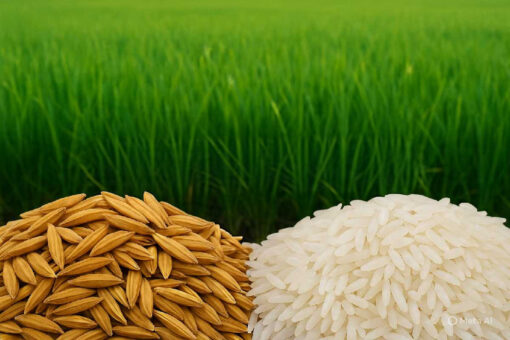A Proposal for Integrated Regional Development
Introduction:
The Brazilian aircraft company Embraer is steadily advancing in the global civil aviation market. With India emerging as one of the fastest-growing aviation hubs in the world, the opportunity to bring Embraer into India is not only timely but strategically significant. By combining Embraer’s expertise with India’s competitive advantages, this partnership can catalyze long-term development in aviation, logistics, services, and regional connectivity.
This proposal outlines how Embraer can establish operations in India, with Goa as its headquarters, Kolhapur as a potential assembly hub, and extended integration across ports, states, and industries. It also highlights how such a collaboration can be aligned with India’s 30-year economic vision.
India’s Advantage in Aviation Partnerships
India has steadily built capacity in manufacturing, design, and maintenance of critical spaces, making it a natural partner for a global player like Embraer. Government collaboration, both at central and state levels, is essential. Institutions like IFCI can play a catalytic role, perhaps through a subsidiary acting as Embraer’s advisory and general sales agent for a 30-year period.
Embraer has expressed interest in investing in India. A central Navratna PSU could participate as a minority partner, with total stakeholder equity capped at 26%. Such an arrangement would encourage Embraer while ensuring domestic participation. Over time, high-net-worth individuals and private enterprises in India could also collaborate to strengthen transportation services, driving incremental improvements for decades.
Goa and Maharashtra: A Strategic Base
Goa emerges as a natural choice for Embraer’s India headquarters. Dabolim airport, originally a military facility, already has the infrastructure and symbolic significance to host such a base. With Brazil currently holding the G20 Presidency, the Goa-Brazil connection can be strengthened by inviting Embraer to set up operations here.
However, while Goa provides the headquarters advantage, Kolhapur airport in Maharashtra offers the land required for aircraft assembly. With around 1,000,000 square feet of available space, Kolhapur can support Embraer’s manufacturing and testing facilities. Together, Goa and Maharashtra can create a powerful ecosystem — Goa handling leadership, services, and training, while Kolhapur manages assembly and operations.
Expanding Regional Connectivity
– Dabolim and Mopa airports can anchor a broader aviation strategy.
– Women pilot training and validation centres could be established with DGCA’s support, encouraging India’s growing pool of female pilots.
– UDAN regional flights can connect smaller destinations within 45–60 minutes, including new-generation connections to GCC nations.
– Cargo capacity can be utilized to transport fruits, vegetables, and other products from Maharashtra and nearby regions, extending to Mopa for added efficiency.
This model leverages the 150 km hinterland from the Goa-Maharashtra border, opening space for enterprise, population absorption, and industry-related growth.
National and Global Extensions
The proposal goes beyond Goa and Maharashtra. Nashik can be linked through dedicated flights, complementing HAL’s expansion. Kota in Rajasthan, with its underutilized old airport, could host additional Embraer assembly and testing facilities.
The long-term business potential is immense — Embraer’s operations in India could generate about ₹100,000 crores over 30 years. Partnerships through CII and the Goa Chamber of Commerce can connect with Brazilian counterparts, establishing joint ventures outside Fortaleza in Ceará state.
Globally, a South-South aviation and logistics corridor can emerge — linking Fortaleza to Senegal, Ethiopia, and onward to Goa. Embraer’s cargo planes would also boost India’s trade links with Europe, GCC nations, Egypt, Israel, Mauritius, South Africa, and Mozambique.
Integration with Ports, Shipbuilding, and Containers
Western India’s ports — Vasco da Gama, New Mangalore, and Cochin — can play a major role in this ecosystem. Cochin Shipyard is already expanding and can complement Goan enterprises in building smaller aircraft components.
India’s container industry has immediate potential for 2 million containers. Goa, with its proximity to ports and rail networks like the Konkan Railway, can emerge as a container hub. Converting the Mormugao Steel Limited campus into a container manufacturing SEZ, supported by PLI incentives, will add significant value.
Building a Services-Driven Economy in Goa
For Goa, the Embraer partnership is more than aviation — it is about transforming into a services-led economy.
Taxi electrification: Incentivizing 20% of Goa’s 18,000 taxis to switch to EVs.
Interstate permits: Agreements with Maharashtra (2,000 permits) and Karnataka (1,000 permits) to boost regional movement.
Residential development: 10,000 new homes and 10,000 guest rooms in South Goa for sustainable growth.
Lounge networks: Rest stops every 10 km with EV charging, hygiene facilities, and 24-hour services.
Taxi drivers can also serve as couriers for government and postal services, improving efficiency and reducing costs.
This, combined with pooling systems and minibuses for peak demand, will ease congestion and generate revenue.
Economic and Employment Impact
The numbers tell their own story:
₹500 crores in new vehicle sales could generate ₹140 crores in GST for Goa.
5,000 new EVs and minibuses could create fresh mobility services.
Lounge and charging facilities can generate employment for 10–15 Goans each, supporting hourly wages of ₹100–₹150.
Long-term, 50% of Goa’s taxi fleet can become electric, with central support programs boosting innovation.
IT and Government Infrastructure
Goa can also attract IT and server facilities. Hosting data centres for the Income Tax Department, GST, RBI, SEBI, and other agencies will decentralize India’s IT load from congested Delhi NCR. With investments of ₹5,000 crores, Goa can support hardware and software projects, strengthening resilience against disruptions like fog, earthquakes, or agitations.
Conclusion
Embraer’s entry into India, anchored in Goa and Maharashtra, represents more than aviation growth. It is an opportunity to align aviation with logistics, services, IT, and sustainable living.
Goa, with its service-oriented culture and strategic geography, can become a hub of peace, prosperity, and enterprise — extending its influence into neighboring districts and linking India to Brazil, Africa, and beyond.
This integrated development proposal demonstrates how India’s aviation future can also drive regional harmony, sustainable employment, and innovation for the next 30 years.


